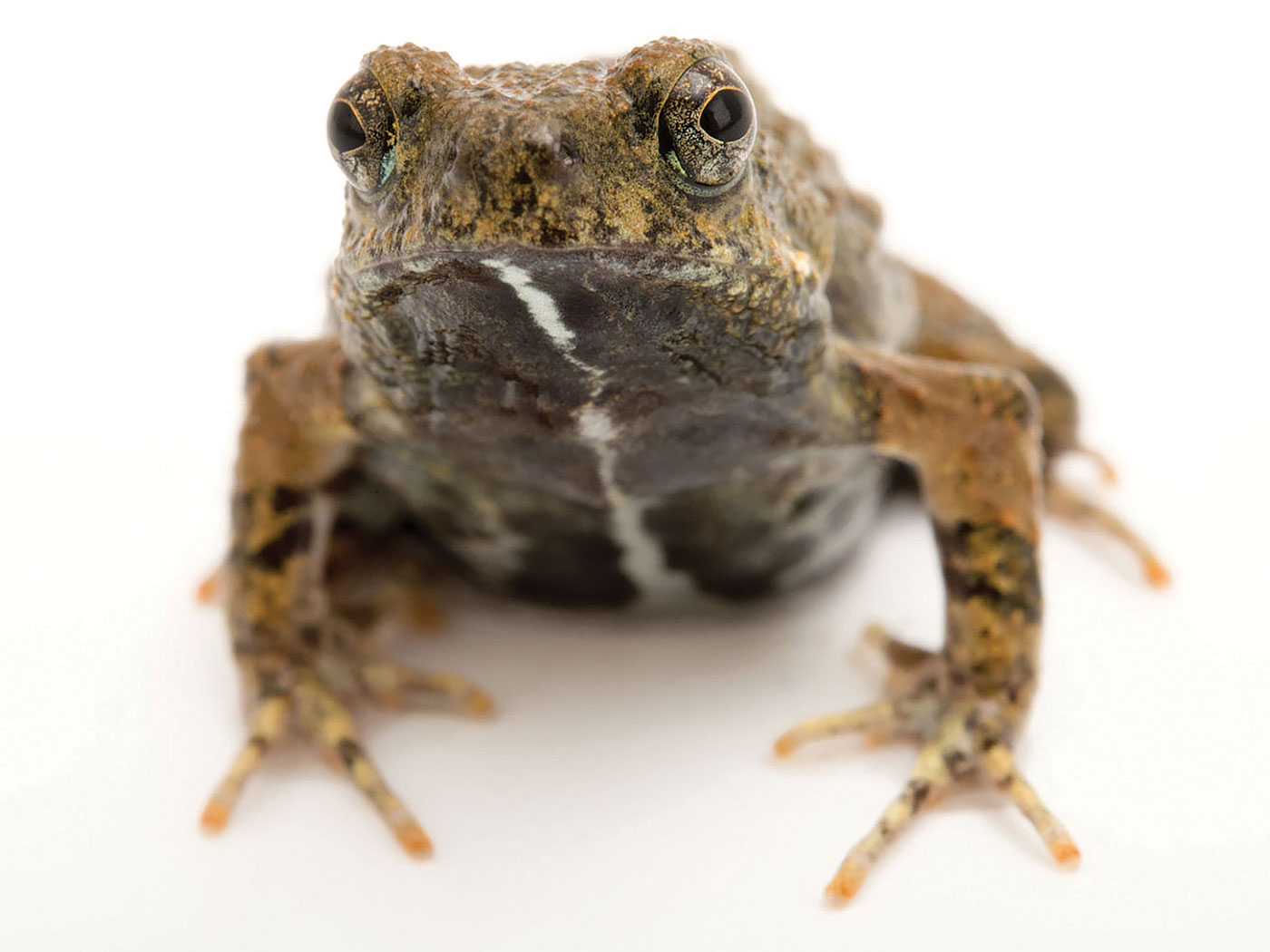In December 2016, Amazon unveiled a high-tech, brick-and-mortar store where customers can swipe the “Amazon Go app to enter the store, take the products you want, and go! No lines, no checkout.”1 Engineers were able to “weave the most advanced” technology into “the very fabric of a store” so any given product is added to a customer’s virtual cart when picked up and deleted if put back.2

Customers don’t notice this going on. Unseen sensors integrated into the store’s environment detect an identifier for everything a customer takes, and programming links its price to their account. Amazon touts how they do it, saying in an introductory online video, “We used computer vision, deep learning algorithms, and sensor fusion.”2 The big selling point is the unhindered activities of customers, but without the sensors, the store’s owners would be blind to their products’ whereabouts…and would soon be out of business.
Sensors trigger many life-saving processes within both human-made devices and living creatures. They also enable human-engineered entities to adapt. We know organisms make suitable self-adjustments to solve multitudes of environmental challenges, a process that allows them to colonize new niches.3 What if that adaptive process begins with their sensors? The ongoing Engineered Adaptability series of articles frames sensors, logic algorithms, and response mechanisms “woven into the fabric” of organisms as elements that enable organisms to continuously track environmental changes—just as Amazon uses them in a similar way to track products and customers.
Current biological training usually doesn’t cultivate a mindset tuned to see these correlations. Biological functions are framed as originating from random genetic changes fractioned out in unpredictable struggles to survive. But, a recent report on two remarkable studies may help with the correlations.
Some microbes transform themselves from a free-swimming form to one that colonizes surfaces. What triggers the differentiation at only the right time? The two studies reported in Science illustrated sensor-initiated systems by discovering “separate mechanisms that allow bacteria to recognize a surface by mechanosensation [internal detection of mechanical stimuli] and initiate a cellular response that allows them to attach and multiply.”4
One study examined Caulobacter crescentus, which swim using organelles called flagella. A single flagellum is a molecular motor rotating an attached filament in a propeller-like fashion. This microscopic motor has parts corresponding to an engineered motor that include a rotor, stator, bearing, and more. It is powered by a flow of hydrogen ions like an electric motor is driven by a flow of electrons. The scientists found an additional purpose in which “inhibition of rotation of the Caulobacter flagellum can also work as a surface sensor.”4 When the filament whips against a surface, the motor stalls and hydrogen ion flow ceases. Innate programming interprets this change as signifying detection of a solid surface, which triggers a cascade of events such as the rapid production of a surface adhesive or the expression of surface motility traits and virulence factors.
Thus, this research found dual purposes for the iconic bacterial flagellum as both a propulsive motor and a sensor. What characteristics describe sensors and identify them as the true triggers of self-adjusting mechanisms?
Sensor Design 101
Engineers find it challenging to design sensors that are accurate, precise, and consistent. Sensors are more than change detectors. If you were asked to design a sensor for an organism, then two additional purposes should come to mind: data acquisition and triggering an appropriate chain of events. Nearly all organisms have defined boundaries, so your design would place some sensors there (like surveillance cameras on a building) as vital links to its environment.
The mechanisms controlling how organisms relate to exposures can be explained using design principles. Two characteristics of sensors clarify that relationship. They also help distinguish between organisms as active problem solvers of environmental challenges as opposed to being passively molded by those challenges.
First, sensors are exquisitely designed to be sensitive to certain environmental conditions and insensitive to others. For instance, can you identify something in your surrounding area that, if detected, would not serve as a stimulus? That could be anything. The reason why myriads of exposures aren’t stimuli is because internal programming specifies for itself what constitutes actual environmental signals, cues, or stimuli.
Second, active surveillance usually acquires data. One specialist commented on how sensors initiate data collection:
A sensor does not function by itself; it is always a part of a larger system that may incorporate many other detectors, signal conditioners, signal processors, memory devices, data recorders, and actuators….A sensor is always a part of some kind of a data acquisition system….Depending on the complexity of the system, the total number of sensors may vary from as little as one (a home thermostat) to many thousands (a space shuttle).5
Sensors Are the True Triggers of Self-Adjusting Mechanisms
The room housing your furnace can be warm or cold, quiet or noisy, and well-lit or dark. Yet, none of these circumstances in and of themselves cause your furnace to turn on. Conditions are only present or not. It is the furnace system design that specifies a specific amount of heat to be a stimulus and integrates a heat sensor to trigger the furnace.
Accordingly, an important engineering principle is that an adjustable system will have a trigger engineered as an integral part. This relationship may be difficult to see since sensors can be located remotely. Whatever trigger the designers incorporate in adaptable devices—be it mechanical, electronic, etc.—will be 1) a sensor and 2) the initiating element of self-adjusting processes.
For example, last month’s article considered basic design characteristics of epigenetic mechanisms.6 These facilitate an organism’s rapid expression of suitable traits that enable it to “flex” in response to a range of suddenly changed conditions. Some of these extraordinary mechanisms allow embryos to detect “signals” from parents and self-adjust their own development—potentially expressing traits better suited to their parent’s current environment, which the baby will soon enter. Engineers see these as highly targeted solutions to specific environmental changes.
Sensor-Condition Complementarity: A Higher Layer of Design
A sensor displays one level of sophisticated design, but it functions within a larger system that reveals an even higher level. A yet higher layer exists in how that system then relates to external conditions. A human-designed communications system has a transmitter and a receiver working together. But, the system’s design information isn’t found in the schematics/specifications of either the transmitter or the receiver individually. It exists at a level higher than each element. An intelligence—with upfront knowledge of the characteristics of each part and how they can harmonize into a wider-ranging system—devises it.
To transfer information, engineering principles dictate two more preliminary conditions. The transmitter and receiver must be tuned to the same frequency, and then the communicators must use the same code-decode protocol (i.e., speak the same language.)

For illustration, when a male túngara frog (Physalaemus pustulosus) makes chucking calls, the sound in and of itself is neither information nor a signal to other túngara frogs. Noise detected by auditory sensors is initially only data that must be processed internally. Researchers demonstrated this by finding “evidence that males and females differ in the relaying of auditory information to the forebrain” via a “gating” mechanism.7 Initially, the frog’s midbrain processes complex auditory data. After data are decoded and interpreted per an as-yet-unidentified innate protocol, it then becomes information and a signal within both sexes…which go on to exhibit different responsive behaviors.
But, neither sex reacted to chucks made by males of a different species, no matter how loudly they were expressed. Their systems weren’t designed for that, and they therefore didn’t respond.
The Question of Sensor Origins Affirms Design
Sensor-condition relationships show highly restricted specificity, shared protocols—sometimes between markedly diverse organisms—and well-integrated systems to achieve function. The question of how these specifications originated has profound research implications for the conclusions that are reached. Since design-based explanations for origins were off the table before one sensory biologist’s investigations even began, he wove together an evolutionary account.
A classic hypothesis of sensory biology is that signals and senses co-evolve….This co-evolution seems an intuitive hypothesis, and it is obvious that a signal must be detectable to function. In addition, we have marvelous examples that show an intimate connection between sensory function and signals. For example, one species of stomatopod [e.g., mantis shrimp] has the rare ability to discriminate the circular polarization of light [a very rare phenomenon that is produced by unique tissues in the tail of fellow shrimp].8
He answers the implicit question of which came first, specialized tail or eye tissue:
In my own informal survey, it appears that most sensory biologists, including myself, are more willing to accept that signals evolve to better be detected by sensory systems than that sensory systems evolve to better detect a given signal.8
Yet, scientifically sketchy, trial-and-error explanations for the origin of sensors sound like products of vivid imaginations that must invoke heaping amounts of pure luck. Why? Well, organisms cannot adapt until they have innate mechanisms enabling adaptability, but sensors are an indispensable element of adaptable systems. Compounding that dilemma is explaining how it is reasonably probable that out of an environment flooded with conditions of potential stimuli, an organism will hit on the precisely needed interconnected triad of detector-condition-stimulus specificity that organisms possess.
Instead of being the result of some unexplained co-evolution, the precise fit of biological sensors to specific conditions, as well as their complicated designs, reflects significant amounts of foresight and planning for a specific purpose.
The precise fit of biological sensors to specific conditions...reflects significant amounts of foresight and planning for a specific purpose. ![]()
Sensors Stand at the Crossroads
Sensors are strategically located at the organism-environment boundary but are also at a crucial point along the philosophical divide between evolutionary externalism and intelligently designed internalism. Why? Because whatever is credited for initiating an adaptive change is usually credited for causing the result.9 Thus, when someone reads evolutionary literature, they should notice that overwhelmingly these researchers don’t even look for an organism’s sensors. Their externalistic philosophy conditions them to visualize external conditions mystically “inducing” expression of genes within organisms and then to declare that new traits are “due to” those conditions. Design-based internalism, however, begins with conditions detected by sensors that initiate an organism’s own response.
In summation, when causality is objectively determined by an approach like engineers use—one that identifies all biological elements in a process and omits mystical events—the observed elements of a self-adjusting process confirm internalism and conflict with externalism.10 Thus, an organism’s surveillance systems seem to actively acquire data that they process into information; they aren’t “sent instructions” by the environment. Their internal programming specifies what condition will be a stimulus or a signal. An integrated sensor for that condition is the vital trigger of their response. Many responses appear to be highly targeted to specific conditions, not the hit-and-miss solutions conjectured by selectionism. Finally, these mechanisms don’t appear to be randomly implemented but are highly regulated and characterized as rapid, repeatable, and sometimes reversible. We see in Amazon stores, bacterial flagella, epigenetics, or túngara frogs a full internal capacity that is consistent with intelligently designed systems.
The tight organism-environment relationship can be explained by populations of active, problem-solving organisms continuously tracking environmental changes via innate mechanisms to express heritable phenotypes bearing problem-solving potential—which precede environmental challenges. Biologists who overlook the engineered role of sensor triggers in an organism’s adaptability are shooting themselves in the foot.
Click here for other articles in the Engineered Adaptability series.
References
- Amazon Go Frequently Asked Questions. Posted on amazon.com. At the time of this writing, the Amazon Go store is still being tested by Amazon employees and is not yet open to the public.
- Bishop, T. How ‘Amazon Go’ works: The technology behind the online retailer’s groundbreaking new grocery store. GeekWire. Posted on geekwire.com December 5, 2016.
- Guliuzza, R. J. 2017. Engineering Causality Is the Answer to Darwinian Externalism. Acts & Facts. 46 (10):17-19.
- Hughes, K. T and H. C. Berg. 2017. The bacterium has landed. Science. 358 (6362): 446-447.
- Fraden, J. 2010. Handbook of Modern Sensors: Physics, Design, and Applications, 4th ed. New York: Springer, 4-5.
- Guliuzza, R. J. 2017. Epigenetics—Engineered Phenotypic “Flexing.” Acts & Facts. 47 (1): 17-19.
- Hoke, K. L., M. J. Ryan, and W. Wilczynski. 2010. Sexually dimorphic sensory gating drives behavioral differences in túngara frogs. The Journal of Experimental Biology. 213 (20): 3463-3472.
- Johnsen, S. 2017. Open Questions: We don’t really know anything, do we? Open questions in sensory biology. BMC Biology. 15 (43): 1-3.
- Guliuzza, R. 2011. Darwin’s Sacred Imposter: The Illusion That Natural Selection Operates on Organisms. Acts & Facts. 40 (9): 12-15.
- One category of externalistic mystical events includes scientifically undetected claims that environments “send instructions,” “exercise agency,” or “select for or against” different organisms. These imaginative claims act as substitute agents within evolutionary theory. See Guliuzza, Epigenetics—Engineered Phenotypic “Flexing.”
* Dr. Guliuzza is ICR’s National Representative. He earned his M.D. from the University of Minnesota, his Master of Public Health from Harvard University, and served in the U.S. Air Force as 28th Bomb Wing Flight Surgeon and Chief of Aerospace Medicine. Dr. Guliuzza is also a registered Professional Engineer.

















